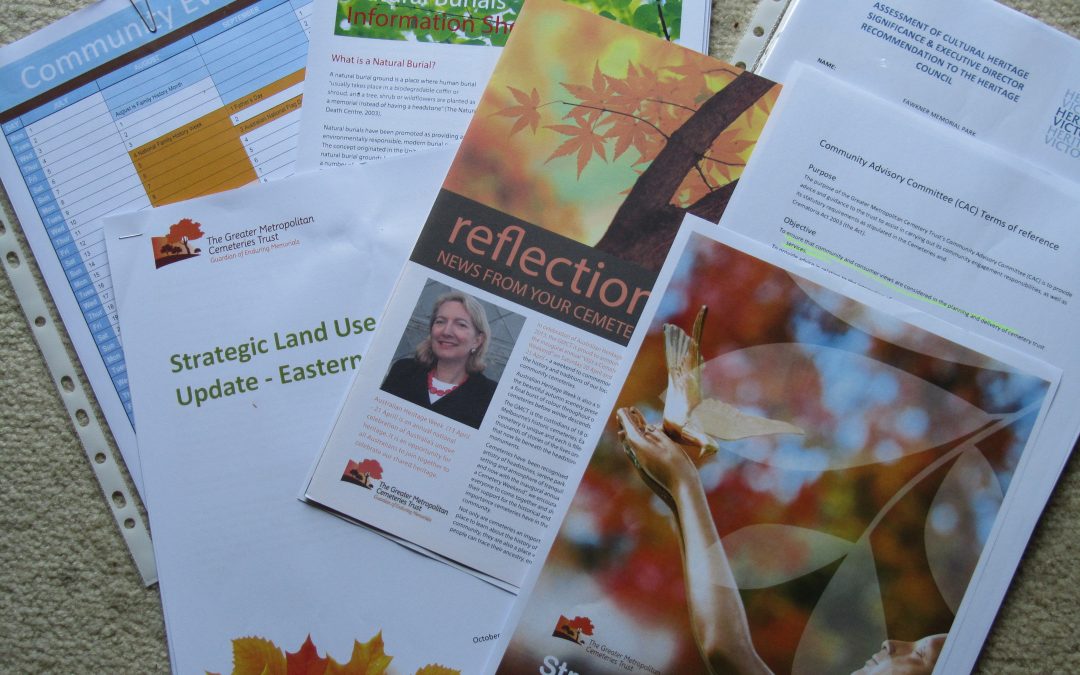After two years focused on the workings of citizen committees I joined a community advisory committee myself. Melbourne’s Greater Metropolitan Cemetery Trust (GMCT) services a huge community. That’s Altona to Lilydale and Fawkner. The diversity of its clientele reflects Melbourne’s cultural and demographic diversity. Members of the Community Advisory Committee are recruited through an expression of interest process (EOI). It’s advertised in local newspapers, and this was how I put my hat in the ring in 2011. At the time their criteria specified knowledge of sustainability and a relationship with one of Melbourne’s diverse spiritual traditions. Candidates went through an interview process in GMCT’s board room. I was not successful. I realised that some citizen committee selection processes are competitive and do attract skilled, interested people.
In 2013 a GMCT Trust member made contact, inviting me to join the committee, based on my previous interview. As a prospective community committee member, I was impressed that a senior person had done this. The GMCT’s community engagement officer followed up, and I received all the documents that the report I recently authored on citizen committees highlights. I went straight to the terms of reference to get clear about the nature of my brief. I noticed that the CAC’s role includes feedback on the Community Engagement Plan. Interesting. The agenda highlighted recent and future projects. I wondered if this would be a top down affair or if members would play a motivating role. Lots of papers- I took a photo of them spread on the carpet.
The first meeting demonstrated a number of good practices when making use of citizen committees:
1. Membership of the committee is changed almost entirely after the term is up. This gives the Trust access to fresh input, and new community views. The Trust does not land up with a stale bunch of ‘expert community members’.
2. The CEO took the time to attend the first meeting, gave a warm welcome to new members, and demonstrated responsiveness to committee members’ interests by offering to set up a guest speaker on the special interest of sustainability dimensions of funerals and cremations. We felt recognised.
3. The Chair gave the new members ample time to get to know each other. She and other Trust members who sit on the committee patiently answered questions about the Trust, its history and practices. We were well informed by the end of the first meeting. A tour of Fawkner cemetery was offered as part of the induction.
4. The agenda had been set up to give new members a picture of the success of projects initiated by past CAC members, and supported by the Trust.
5. All new members were able to contribute to the discussion and provide the perspectives that the Trust is seeking through using this form of community engagement. Some areas canvassed included heritage, maintenance of metro cemeteries through Friends Groups, shroud burial, planning and design, young people’s responses to death and the cemetery and specific practices at different sites of the Trust.
A really good start to my short shelf life as a community advisory committee member!


